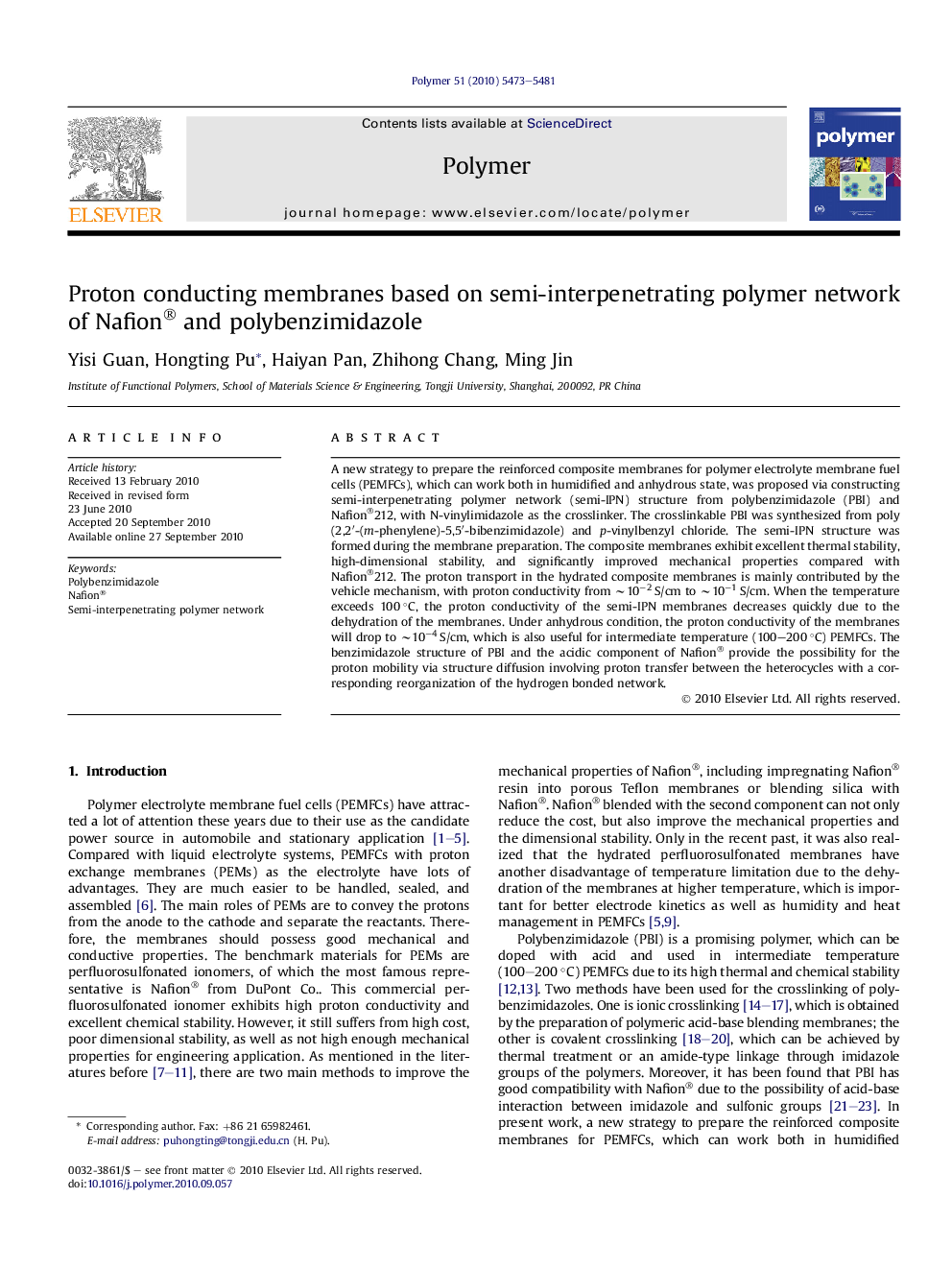| Article ID | Journal | Published Year | Pages | File Type |
|---|---|---|---|---|
| 5184607 | Polymer | 2010 | 9 Pages |
A new strategy to prepare the reinforced composite membranes for polymer electrolyte membrane fuel cells (PEMFCs), which can work both in humidified and anhydrous state, was proposed via constructing semi-interpenetrating polymer network (semi-IPN) structure from polybenzimidazole (PBI) and Nafion®212, with N-vinylimidazole as the crosslinker. The crosslinkable PBI was synthesized from poly(2,2â²-(m-phenylene)-5,5â²-bibenzimidazole) and p-vinylbenzyl chloride. The semi-IPN structure was formed during the membrane preparation. The composite membranes exhibit excellent thermal stability, high-dimensional stability, and significantly improved mechanical properties compared with Nafion®212. The proton transport in the hydrated composite membranes is mainly contributed by the vehicle mechanism, with proton conductivity from â¼10â2 S/cm to â¼10â1 S/cm. When the temperature exceeds 100 °C, the proton conductivity of the semi-IPN membranes decreases quickly due to the dehydration of the membranes. Under anhydrous condition, the proton conductivity of the membranes will drop to â¼10â4 S/cm, which is also useful for intermediate temperature (100-200 °C) PEMFCs. The benzimidazole structure of PBI and the acidic component of Nafion® provide the possibility for the proton mobility via structure diffusion involving proton transfer between the heterocycles with a corresponding reorganization of the hydrogen bonded network.
Graphical abstractDownload full-size image
